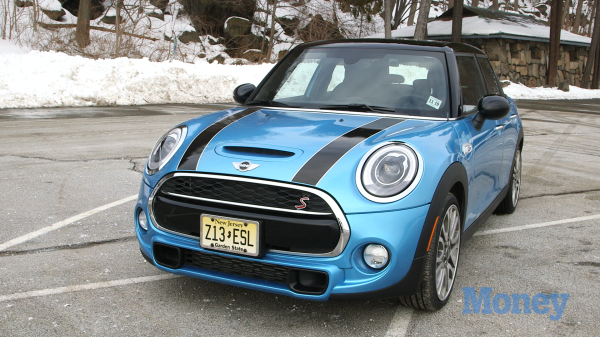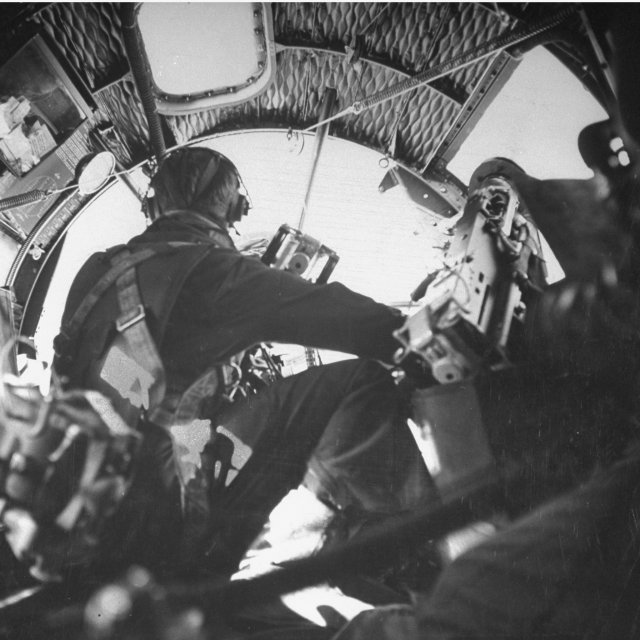Mini Cooper 4-Door Is a Fun Car With a Serious Price

Well look at you, Mini Cooper S 4-door, you’re not so mini anymore.
We have to expect that. After all, in the U.S., Mini is now a teenager, and you know what means: a growth spurt. Indeed, the Mini 4-door has added nearly more than six inches to the car’s length, in part by extending the wheelbase. This squareback has become more rectangular and with more room in the back seat. A teenager might like that.
The Mini 4-door also comes with a more grownup price. It starts at $21,700 for the base model, while the one we drove, the Mini Cooper S, weighs in at a less-than-mini $25,100.
The tags start there, but it is unlikely that any buyer could ever get away with those entry prices. The company boasts that you can get your MINI in any of eight million combinations. Eight million! As if that were a good thing.
For instance, you can choose the Cooper S sport package ($1,250), the premium package ($1,750), the media package ($750), the wired package ($1,750), the wired upgrade ($850), the loaded package ($2,250), the fully loaded ($4,500), or the flash package (a mere $400). You want rear fog lights? That’s $100. How am I supposed to know if I want rear fog lights? Apparently, no one in this company ever heard of the tyranny of choice. Why not make the most useful and popular stuff—a rear camera, say—standard and give consumers a real base price so they don’t need a spreadsheet to figure out the final cost?
Then again, that’s part of the issue with Mini, at least for me. This brand has never screamed value; it’s more about you and the unrelenting cuteness that BMW tries to impart in Mini. And it has done so brilliantly. You can personalize your Mini to the nth degree and give it a name. But this means that our test car had a sticker that neared $36,000, what with its moon roof, heated seats, and the $4,500 fully loaded package, which included everything from bonnet stripes to Xenon headlamps with cornering lights to a navigation system—but no rear camera.
At that price you are inviting competition, and there’s plenty of it. You want cute? There’s the Kia Soul, with the same hipster demeanor and a slightly lower sticker, at $21,000 all tricked out. There’s the new Fiat 500L, starting at $20,900, plus Honda’s Fit. And don’t forget the Ford Fiesta, which despite the Detroit nameplate is a true Eurohatch and starts at around $21,400. (The ST version of the Fiesta, with its 197-horsepower engine, gets admiring nods from the likes of Car and Driver, among others.) Less edgy but ever so practical is Volkswagen’s new Golf, the SE version at about $25,000 being just about everything you’d want in a Mini, but with more room and just as much vroom.
Certainly the 4-door Cooper S is a clever little devil and it may be the first color-coded car in the industry. The dash is dominated by oval designs, from the vents to the temperature controls to the giant information hub that rules the center. It’s an automotive mood ring with an 8-inch screen. The Cooper S has three driving modes—green, standard, and sport—and the ring is there to guide you, in case you’re not used to driving, I guess.
In green, or efficiency mode, the ring is of course green—unless you adjust the heat, upon which the ring goes red, white, and blue, the length of each color moving to match your temperature adjustment. If you have the nav system on—and it BMW’s clumsy version—the ring lights up in white as you approach a turn and gradually recedes around the circle as you get closer and closer to turning. Accent lighting finishes off the show: You can adjust the colors, in case you’re in a purple driving mood. Little kids are going to love this thing, and maybe drive you crazy: “Make it go orange, Mommy.” If you have difficulty distinguishing colors, alas, this isn’t your machine.
The disco dashboard has some sophisticated touches, too, including a clever adjustable steering wheel that’s integrated with the speedometer/tachometer so that the whole unit shifts; because of that, the steering wheel should never get in your sightline. At the top and bottom of the center column is a series of toggle switches, including the red on/off switch, that are reminiscent of WWII vintage aircraft. It’s a nice touch, although one toggle operates a pop-up, heads-up display that defines useless. The windshield falls away at a steep angle, giving you a wide open sensation, and the optional moonroof only adds to it. The Mini doesn’t feel as mini as it is, even in the stretched version. But it is still a Mini. Despite what the company has done to enlarge the rear seating area, including scooping out the backs of the front seats to create a knee nook, the back seats aren’t going to be anyone’s ideal of spacious,
Stretching the Mini hasn’t hurt its driving characteristics. The company still touts its go-kart steering, made possible by the car’s wide-set wheels. The basic Mini 4-door is powered by a 1.5 liter, turbo three-cylinder, 134-hp engine, which doesn’t promise to be a thrill ride. The cornering and parking ease, however, makes it a true city car. The Mini Cooper S we tested ups the ante, to a four-cylinder, twin-turboed 228-hp engine that can reach 60 miles per hour in 6.6 seconds. Perfectly adequate on the highway (and you’ll be well north of 30 miles per gallon). And when you switch to Sport mode, the difference in the 6-speed automatic transmission ($1,250, or $1,500 with paddle shifters) is noticeable.
It’s a fun ride in a fun car, but at a fairly serious price. Alas, the nimble steering of the Mini couldn’t help us evade a pothole on dark and rainy I-95 in Connecticut, which would reveal another benefit of the Cooper S model: runflat tires.

